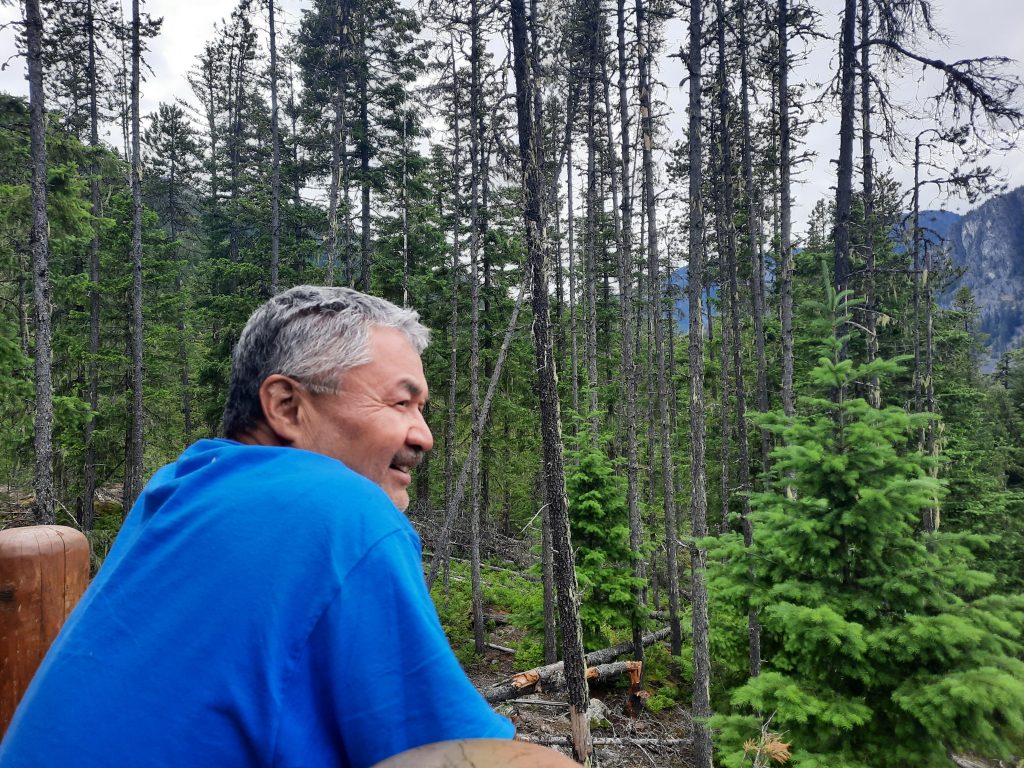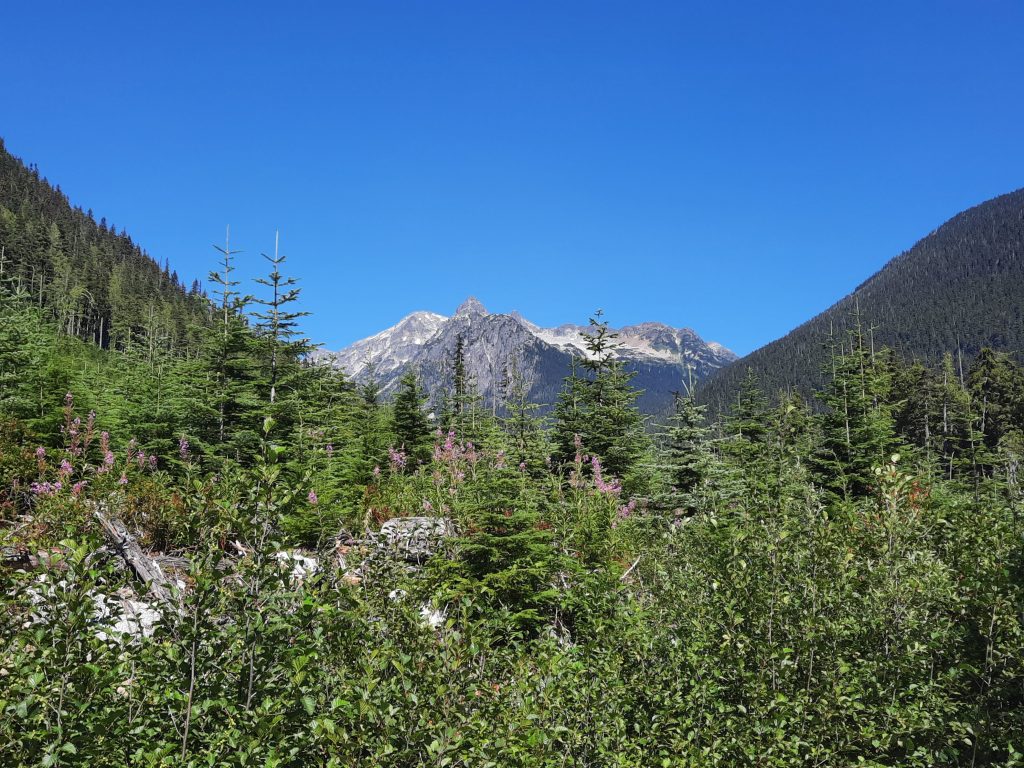
In the wake of the 2010 Winter Olympics, the territory of Líl̓wat First Nation has become a hub for outdoor enthusiasts and tourism operators. However, this surge in human activity, largely fueled by outdoor recreationists and backcountry thrill-seekers, has encroached upon the traditional hunting grounds, fishing areas, and traplines of Líl̓wat Nation.
According to a study by Líl̓wat and UBC Forestry researchers, this has contributed to what they identify as a form of ‘slow violence’— an erosive force on the territory which leads to negative impacts on the traditional foods and cultural practices of Líl̓wat Nation.
“Obviously, something’s not working,” says Martin Nelson (traditional name: Swúw̓a in the Líl̓wat language, Ucwalmícwts) a hunter with the Líl̓wat Nation. “I come from the land. The key is building relationships and preserving the living soul of the land. We’re still here, we’re still connected to the land.”
Tonya Smith, post-doctoral fellow at UBC Forestry discusses ways to combat this slow violence and develop co-management and governance strategies more in line with the Líl̓wat people’s customary relationship with their territory.

What was the objective of your research regarding Líl̓wat Nation’s food sovereignty, and what did you discover?
TS: Our primary aim was to comprehensively understand how activities influenced by Western approaches to land management impact Líl̓wat Nation’s intricate food systems. Through our research, we uncovered that not only are logging and hydropower generation responsible for significantly disrupting and displacing the Líl̓wat community’s traditional food practices, but that outdoor recreation also plays an increasingly growing role in this disruption. Recreation not only hinders access to essential cultural foods but also impacts the presence of these foods in the territory.
How do conflicting beliefs between Western conservation and Líl̓wat Nation’s views manifest in conservation practices?
TS: Western conservation strategies often prioritize quantifiable results and a ‘fines and fences’ approach to conservation, while Líl̓wat perspectives tend to put more emphasis on relational connections with the land and wise use based on pragmatic knowledge proven reliable through generations. This fundamental disparity often leads to conflicts between ways to approach meeting with shared objectives.

What implications do your findings have for policies and collaborations in conservation and land management?
TS: Our research underscores the crucial need to respect and honor the decisions of Líl̓wat Nation in land stewardship practices in their territory. Furthermore, it suggests that governmental institutions and policymakers should exhibit flexibility in adapting policies, renegotiating boundaries, and supporting Indigenous protocols. This approach is vital to protecting and enhancing Líl̓wat food sovereignty while maintaining stewardship objectives.
What strategies or approaches do you propose to bridge the gap between Western conservation practices and Indigenous perspectives in land management?

TS: We advocate for personal and institutional learning for those working in academic and governmental sectors to foster more nuanced and accurate understandings of Indigenous peoples’ histories, current realities and knowledge systems. It is important for decision-makers and researchers to first learn how Indigenous Nations want to be engaged with in decision-making about their territory. For Canadians to meet with their responsibilities to the Indigenous peoples on whose stolen lands we live, it is critical to look at how ‘recreating’ is not a neutral activity.
How might current policies or frameworks be adapted to better align with Líl̓wat Nation’s priorities in conserving their land and food sovereignty?
TS: Adaptation of policies involves shifting towards consent-based processes that empower and support Líl̓wat Nation in their decision-making concerning their territory. This requires that Indigenous Nations be meaningfully supported with the resources and time that it takes to make decisions following the processes and protocols of their people, who know best how to take care of their territory.

How can academia, policymakers, and local communities contribute to better conservation practices respecting Indigenous perspectives?
TS: Establishing meaningful relationships with Indigenous Nations and communities is pivotal. It involves continuous education, embracing humility, and actively supporting Indigenous leadership in land-related matters. To achieve this, academia and policymakers must prioritize learning about and respecting Indigenous peoples and their knowledges, follow culturally appropriate decision-making processes, and support the leadership of Indigenous voices in policy discussions.
Read the full article: ‘Loved to Death’: Conflicts between Indigenous food sovereignty, settler recreation, and ontologies of land in the governance of Líl̓wat tmicw